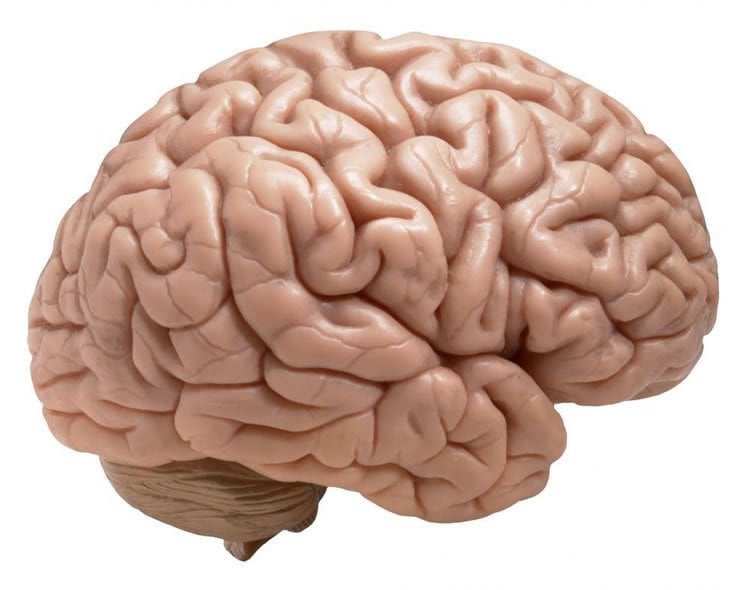Summary: Researchers propose the human brain is disproportionately large as a result of sizing one another up in large cooperative social groups.
Source: Cardiff University.
Experts suggest that complex decisions of whether to help someone or not could have led to the disproportionately large human brain.
Humans have evolved a disproportionately large brain as a result of sizing each other up in large cooperative social groups, researchers have proposed.
A team led by computer scientists at Cardiff University suggest that the challenge of judging a person’s relative standing and deciding whether or not to cooperate with them has promoted the rapid expansion of human brain size over the last 2 million years.
In a study published in Scientific Reports today, the team, which also includes leading evolutionary psychologist Professor Robin Dunbar from the University of Oxford, specifically found that evolution favours those who prefer to help out others who are at least as successful as themselves.
Lead author of the study Professor Roger Whitaker, from Cardiff University’s School of Computer Science and Informatics, said: “Our results suggest that the evolution of cooperation, which is key to a prosperous society, is intrinsically linked to the idea of social comparison – constantly sizing each up and making decisions as to whether we want to help them or not.
“We’ve shown that over time, evolution favours strategies to help those who are at least as successful as themselves.”
In their study, the team used computer modelling to run hundreds of thousands of simulations, or ‘donation games’, to unravel the complexities of decision-making strategies for simplified humans and to establish why certain types of behaviour among individuals begins to strengthen over time.
In each round of the donation game, two simulated players were randomly selected from the population. The first player then made a decision on whether or not they wanted to donate to the other player, based on how they judged their reputation. If the player chose to donate, they incurred a cost and the receiver was given a benefit. Each player’s reputation was then updated in light of their action, and another game was initiated.
Compared to other species, including our closest relatives, chimpanzees, the brain takes up much more body weight in human beings. Humans also have the largest cerebral cortex of all mammals, relative to the size of their brains. This area houses the cerebral hemispheres, which are responsible for higher functions like memory, communication and thinking.
The research team propose that making relative judgements through helping others has been influential for human survival, and that the complexity of constantly assessing individuals has been a sufficiently difficult task to promote the expansion of the brain over many generations of human reproduction.
Professor Robin Dunbar, who previously proposed the social brain hypothesis, said: “According to the social brain hypothesis, the disproportionately large brain size in humans exists as a consequence of humans evolving in large and complex social groups.

“Our new research reinforces this hypothesis and offers an insight into the way cooperation and reward may have been instrumental in driving brain evolution, suggesting that the challenge of assessing others could have contributed to the large brain size in humans.”
According to the team, the research could also have future implications in engineering, specifically where intelligent and autonomous machines need to decide how generous they should be towards each other during one-off interactions.
“The models we use can be executed as short algorithms called heuristics, allowing devices to make quick decisions about their cooperative behaviour,” Professor Whitaker said.
“New autonomous technologies, such as distributed wireless networks or driverless cars, will need to self-manage their behaviour but at the same time cooperate with others in their environment.”
Source: Michael Bishop – Cardiff University
Image Source: This NeuroscienceNews.com image is in the public domain.
Original Research: Full open access research for “A Dominant Social Comparison Heuristic Unites Alternative Mechanisms for the Evolution of Indirect Reciprocity” by Roger M. Whitaker, Gualtiero B. Colombo, Stuart M. Allen and Robin I. M. Dunbar in Scientific Reports. Published online August 12 2016 doi:10.1038/srep31459
[cbtabs][cbtab title=”MLA”]Cardiff University. “Large Human Brain Evolved as a Result of ‘Sizing Each Other Up’.” NeuroscienceNews. NeuroscienceNews, 12 August 2016.
<https://neurosciencenews.com/brain-neuroevolution-4838/>.[/cbtab][cbtab title=”APA”]Cardiff University. (2016, August 12). Large Human Brain Evolved as a Result of ‘Sizing Each Other Up’. NeuroscienceNew. Retrieved August 12, 2016 from https://neurosciencenews.com/brain-neuroevolution-4838/[/cbtab][cbtab title=”Chicago”]Cardiff University. “Large Human Brain Evolved as a Result of ‘Sizing Each Other Up’.” https://neurosciencenews.com/brain-neuroevolution-4838/ (accessed August 12, 2016).[/cbtab][/cbtabs]
Abstract
A Dominant Social Comparison Heuristic Unites Alternative Mechanisms for the Evolution of Indirect Reciprocity
Cooperation is a fundamental human trait but our understanding of how it functions remains incomplete. Indirect reciprocity is a particular case in point, where one-shot donations are made to unrelated beneficiaries without any guarantee of payback. Existing insights are largely from two independent perspectives: i) individual-level cognitive behaviour in decision making, and ii) identification of conditions that favour evolution of cooperation. We identify a fundamental connection between these two areas by examining social comparison as a means through which indirect reciprocity can evolve. Social comparison is well established as an inherent human disposition through which humans navigate the social world by self-referential evaluation of others. Donating to those that are at least as reputable as oneself emerges as a dominant heuristic, which represents aspirational homophily. This heuristic is found to be implicitly present in the current knowledge of conditions that favour indirect reciprocity. The effective social norms for updating reputation are also observed to support this heuristic. We hypothesise that the cognitive challenge associated with social comparison has contributed to cerebral expansion and the disproportionate human brain size, consistent with the social complexity hypothesis. The findings have relevance for the evolution of autonomous systems that are characterised by one-shot interactions.
“A Dominant Social Comparison Heuristic Unites Alternative Mechanisms for the Evolution of Indirect Reciprocity” by Roger M. Whitaker, Gualtiero B. Colombo, Stuart M. Allen and Robin I. M. Dunbar in Scientific Reports. Published online August 12 2016 doi:10.1038/srep31459






